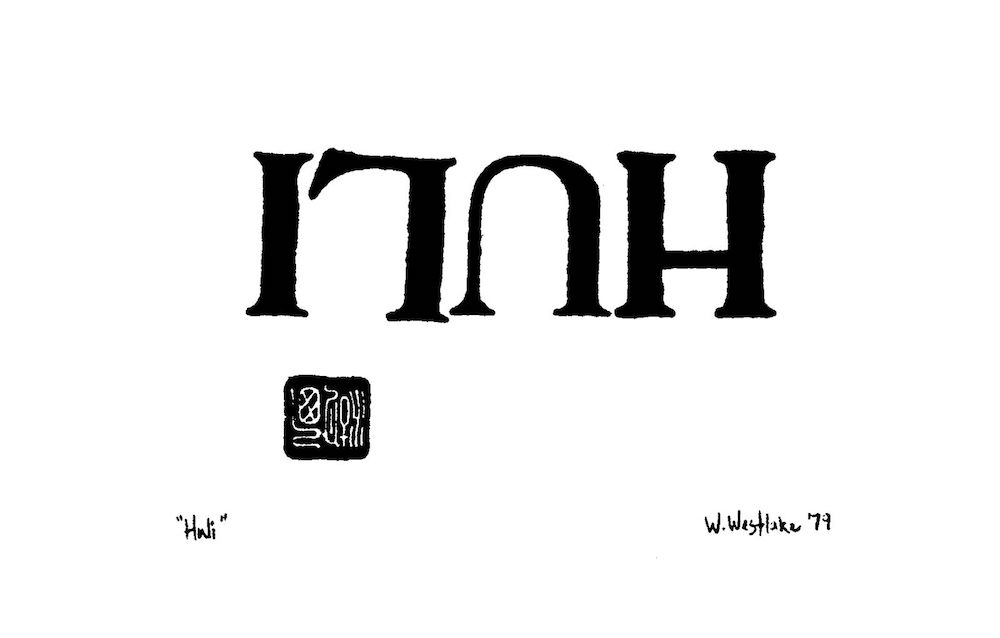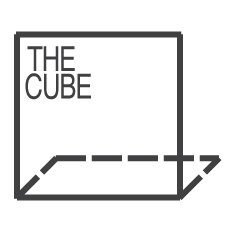
Wayne Kaumualii Westlake
HULI,1979, hand stamp rubber type with hanko
Courtesy of Mei-Li Siy and Richard Hamasaki
SEAMS

In ʻōlelo Hawaiʻi (Hawaiian language), the word “huli” evokes many layered and contextually dependent meanings. Composer Mary Kawena Pukui and linguist Samuel H. Elbert recorded the following definitions in their co-authored Hawaiian Dictionary, “To turn, reverse; to curl over, as a breaker; to change, as an opinion or manner of living. To look for, search, explore, seek, study. Section, as of a town, place, or house. Taro top, as used for planting.”
In the 1970s, “HULI” was a rallying call across Ka Paeʻāina o Hawaiʻi (the Hawaiian archipelago)—written with conviction, painted on cardboard signs and bed sheet banners, called out during sit-ins, pickets, marches, and broadcasts. Amidst this reawakening of Native Hawaiian culture, demands for increased self-determination and action against the U.S. Empire in the Pacific were commonplace. In 1979, Kanaka ʻŌiwi (Native Hawaiian) poet, translator, journalist, and educator Wayne Kaumualii Westlake (1947–1984) channeled the energies of the moment in an unassuming print, four letters hand stamped in black ink on paper—HULI. Westlake’s simple and unsettling gesture, presenting the word flipped and reversed, literalizes its transformational potential, allowing its meaning to be sensed, if not necessarily understood, by all readers. Over four decades later, HULI continues to encapsulate longstanding and ongoing grassroots efforts for systemic change.
HULI appears in its current form courtesy of Westlake’s former companion Mei-Li M. Siy and his friend and collaborator Richard “red flea” Hamasaki, co-editors of Westlake: Poems by Wayne Kaumualii Westlake (1947–1984), first published in 2009 by the University of Hawaiʻi Press.
As we each work towards the causes that we believe in, may the dead continue to speak through the living and the living through the dead. E hoʻohuli!
-Curator|Drew Kahuʻāina Broderick +Josh Tengan
Wayne Kaumualii Westlake
Drew Kahuʻāina Broderick is an artist, independent curator, and community educator from Mōkapu, Kailua, Koʻolaupoko, Oʻahu. Currently, he serves as Director of Koa Gallery at Kapiʻolani Community College. Previously, he was a contributing member of Hawaiʻi-based collective PARADISE COVE (2015-2018), operated SPF Projects (2012-2016) an artist-run initiative dedicated to building capacity for contemporary art in Honolulu, and co-founded an annual open call thematic exhibition, CONTACT (2014-present). Recent and forthcoming projects include Transits and Returns (2019), co-developed by Sarah Biscarra Dilley, Freja Carmichael, Léuli Lunaʻi Eshrāghi, Tarah Hogue, Lana Lopesi for the Vancouver Art Gallery; Mai hoʻohuli i ka lima i luna (2020), co-curated with Kaʻili Chun and Kapulani Landgraf for the Hawaiʻi State Art Museum.
Curator : Drew Kahuʻāina Broderick
Josh Tengan is a Honolulu-based contemporary art curator. He was the assistant curator of the second Honolulu Biennial 2019, To Make Wrong/Right/Now. Since 2015, he has worked with Native Hawaiian and Hawaiʻi-based artists and cultural practitioners, through the arts non-profit Puʻuhonua Society, to deliver Hawaiʻi’s largest annual thematic contemporary art exhibition, CONTACT, which offers a critical and comprehensive survey of local contemporary visual culture. In 2019, he curated CONTACT, Acts of Faith, presented at the Hawaiian Mission Houses Historic Site and Archive, which explored the role of religion in the colonization of Hawaiʻi through artistic interventions in the historic collections and an artist book library.


